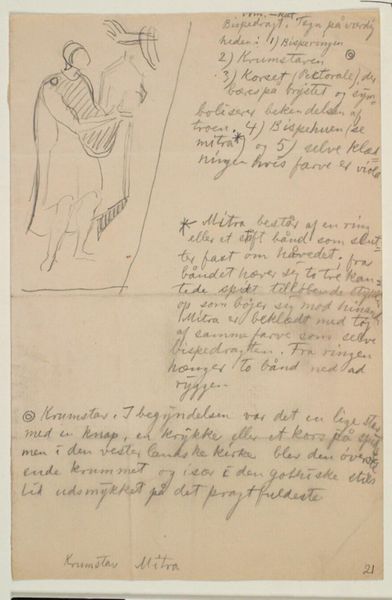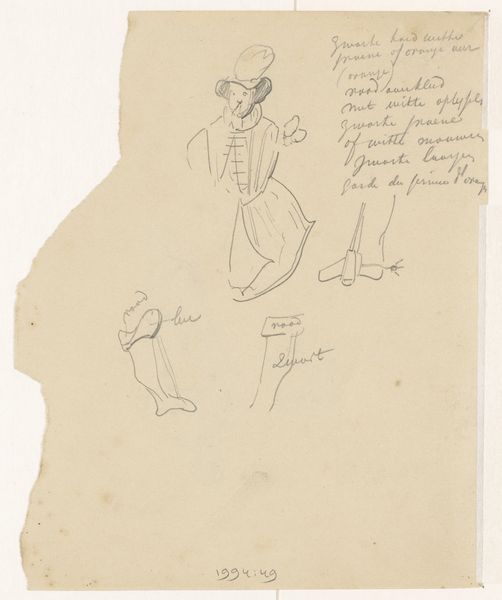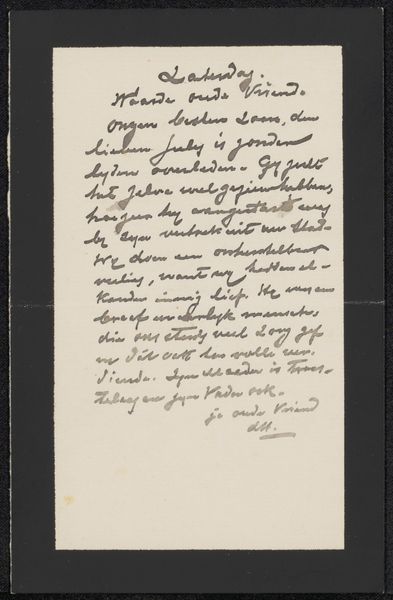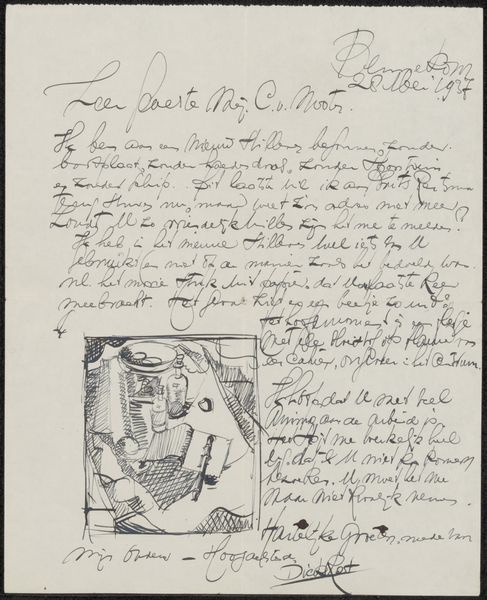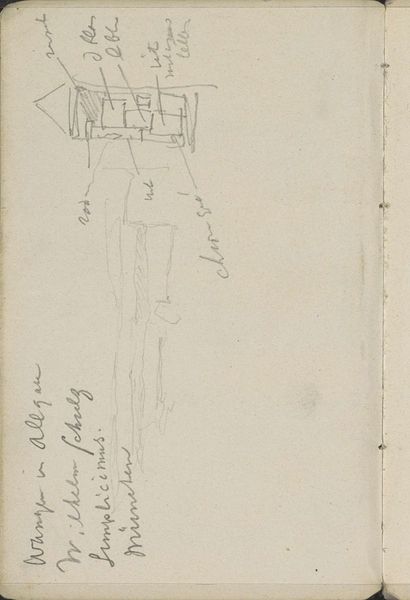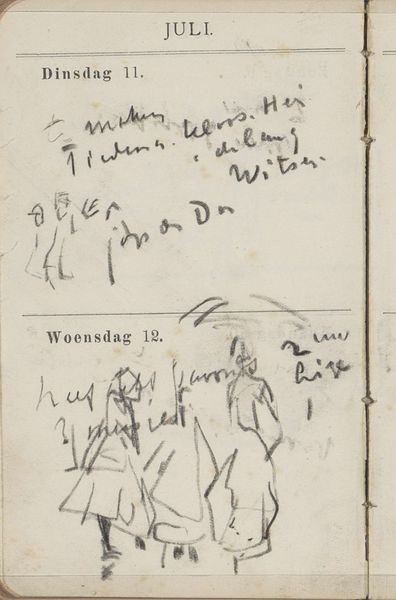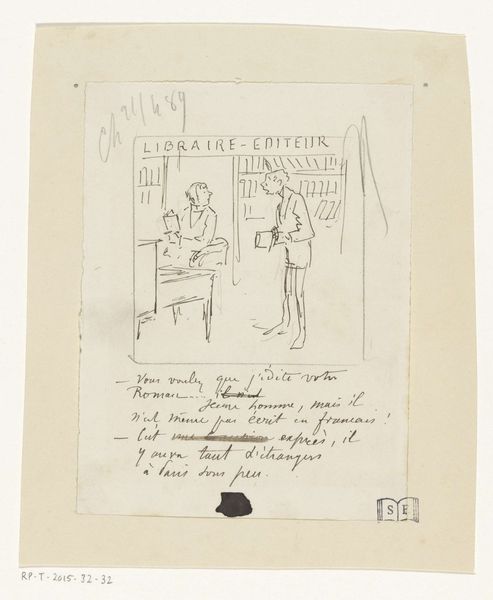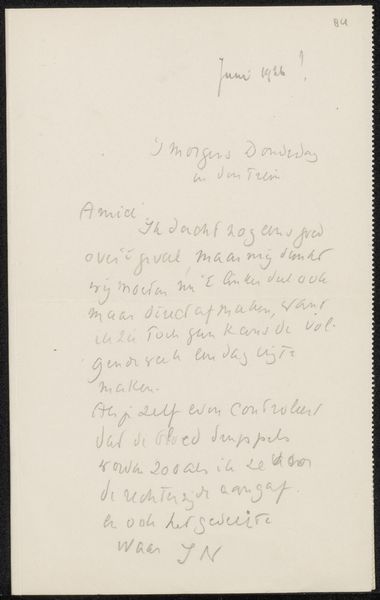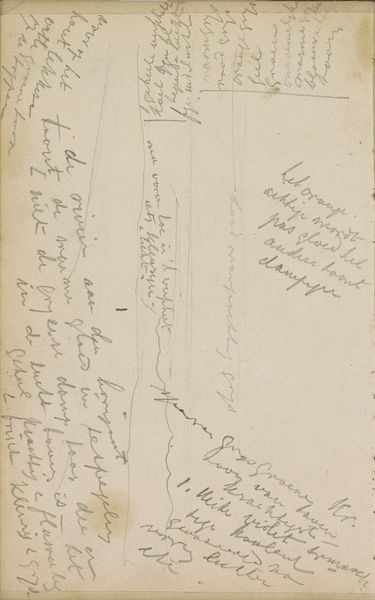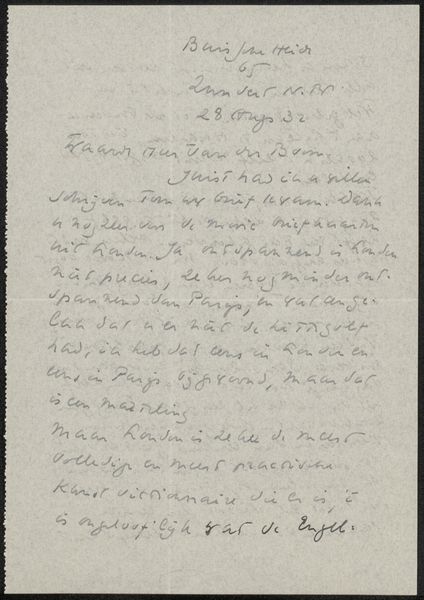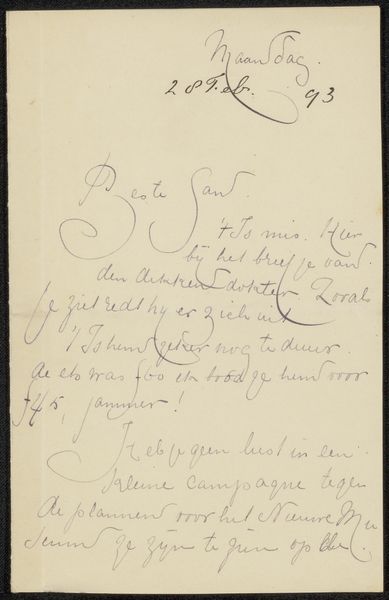
drawing, paper, ink
#
portrait
#
drawing
#
pen sketch
#
figuration
#
paper
#
ink
Copyright: Rijks Museum: Open Domain
Curator: Here we have Willy Sluiter's "Brief aan Jan Veth," a drawing created sometime between 1921 and 1926, now residing here at the Rijksmuseum. It is ink on paper, what are your initial thoughts? Editor: My immediate response is surprise at the lightness of touch in something carrying so much assumed authority—that is to say, it almost reads as humorous instead of assertive or authoritarian. Curator: That reading aligns well with Sluiter's position as the secretary of an art exhibition—the "KUNSTTENTOONSTELLING PARIJS 1921" is handwritten along the top of the drawing, along with a date that suggests a kind of casual administrative context for what is otherwise an unexpectedly satirical little image. What symbolism are you spotting here? Editor: Well, the obvious striking symbols here are the figures themselves, presented in this loose, sketched style, with their hands seemingly extended in a pointing or gesturing manner as if holding weapons. There's a strange ambivalence there: defense, aggression, accusation... The figures remind me a bit of Chaplin's *The Great Dictator.* Curator: I see what you mean! The posture, certainly, evokes that slightly bombastic quality. Considering the post-World War I atmosphere, it's not a stretch to interpret those "weapons" as symbols of power, dominance, even oppression. Sluiter might be subtly critiquing the dynamics of the art world itself, with its gatekeepers and power structures. Editor: Or maybe those aren't weapons at all. Think about stagecraft: they may be conducting the orchestra, directing the scene, pointing towards change—towards a horizon, not a target. They become active figures shaping what will be, as much as symbols of a potential, latent hostility. Curator: It strikes me that a psychoanalytic interpretation might posit that the overt display of potential harm suggests an internalized struggle with masculine ideals—strength perhaps veiling vulnerability, hidden in plain sight here at the Rijksmuseum. Editor: Whether satire or sermon, a casual sketch or veiled social critique, this small drawing on paper manages to raise questions about intent, about context, and perhaps most tellingly, about the eye of the beholder. Curator: Agreed. This really exemplifies the richness one finds in art when engaging diverse interpretive strategies, as this "Brief aan Jan Veth" becomes much more than ink on paper, but an opportunity to unpack larger historical, social, and psychic registers.
Comments
No comments
Be the first to comment and join the conversation on the ultimate creative platform.
